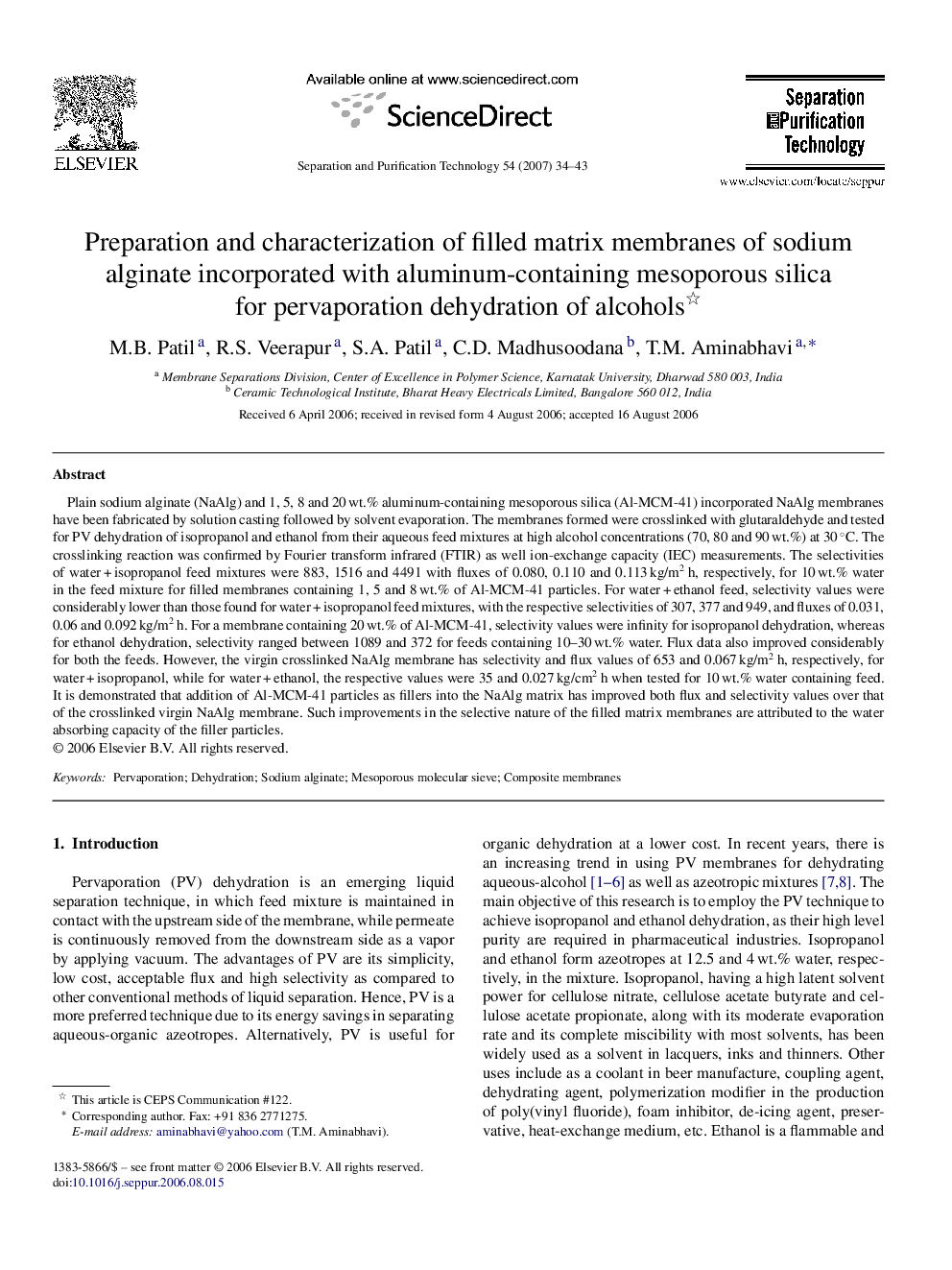| Article ID | Journal | Published Year | Pages | File Type |
|---|---|---|---|---|
| 644122 | Separation and Purification Technology | 2007 | 10 Pages |
Plain sodium alginate (NaAlg) and 1, 5, 8 and 20 wt.% aluminum-containing mesoporous silica (Al-MCM-41) incorporated NaAlg membranes have been fabricated by solution casting followed by solvent evaporation. The membranes formed were crosslinked with glutaraldehyde and tested for PV dehydration of isopropanol and ethanol from their aqueous feed mixtures at high alcohol concentrations (70, 80 and 90 wt.%) at 30 °C. The crosslinking reaction was confirmed by Fourier transform infrared (FTIR) as well ion-exchange capacity (IEC) measurements. The selectivities of water + isopropanol feed mixtures were 883, 1516 and 4491 with fluxes of 0.080, 0.110 and 0.113 kg/m2 h, respectively, for 10 wt.% water in the feed mixture for filled membranes containing 1, 5 and 8 wt.% of Al-MCM-41 particles. For water + ethanol feed, selectivity values were considerably lower than those found for water + isopropanol feed mixtures, with the respective selectivities of 307, 377 and 949, and fluxes of 0.031, 0.06 and 0.092 kg/m2 h. For a membrane containing 20 wt.% of Al-MCM-41, selectivity values were infinity for isopropanol dehydration, whereas for ethanol dehydration, selectivity ranged between 1089 and 372 for feeds containing 10–30 wt.% water. Flux data also improved considerably for both the feeds. However, the virgin crosslinked NaAlg membrane has selectivity and flux values of 653 and 0.067 kg/m2 h, respectively, for water + isopropanol, while for water + ethanol, the respective values were 35 and 0.027 kg/cm2 h when tested for 10 wt.% water containing feed. It is demonstrated that addition of Al-MCM-41 particles as fillers into the NaAlg matrix has improved both flux and selectivity values over that of the crosslinked virgin NaAlg membrane. Such improvements in the selective nature of the filled matrix membranes are attributed to the water absorbing capacity of the filler particles.
